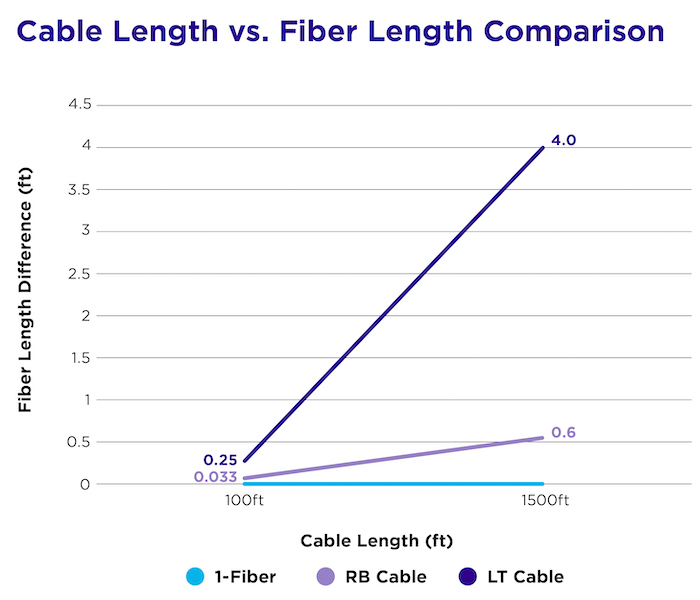
Many factors can delay the data transmitted between a client device and a server. These delays, known as network latency, can occur anywhere within a complex system of devices and network paths as data travels from point A to B. Bandwidth requirements, infrastructure components, the number of terminations in your network, and the installation methods used can all be culprits in network latency. For most industries, the end-user can manage these factors when designing their network through suppliers, network topography, overall fiber count, and infrastructure installer choices. Making the right choices ensures your network operates smoothly and maintains existing Service Level Agreements (SLAs).
For current and future industries measuring success by the millisecond or even proto second, managing fiber-optic latency – the time it takes light to travel through a fiber optic cable – is crucial.
Each fiber affects overall latency within a network and must perform within the smallest variances. The financial industry is at the forefront of managing the infinitesimal differences in latency. This market recognizes the leverage of mitigating latency and the importance of the colocation data centers that house their networks. It is important to note that while these entities have quite different latency strategies, each uses the same tools to achieve its goals.

Industries Limited by Latency: Financial Services, Telemedicine, Gaming & Metaverse, AI, Military
Pictured Above: Financial Services Colocation Data Center: With the advent of automated, algorithm enabled, execution of sales, “time” is of critical advantage and therefore has a direct impact on the bottom line
While financial institutions must create advantages over competitors by managing latency (for example, time matters on the trading floor), data centers (DC) strive to create equality among all customers. DCs typically operate by the motto “Minimize & equalize to demarcation point for the client base.” To gain a “leg up” over competitors, financial institutions seek to minimize latency from the demarcation point provided by the host. Although neither the client nor the service provider can control physical proximity to the trading floor, the distances between server to rack and port to port can be managed by the fiber length within the cable assemblies. Exact-length cable assemblies are one of the most critical infrastructure products in achieving latency goals.
Creating an exact-length cable assembly is, as the name implies, an “exacting” process. Cable assemblies used within DCs are multi-fiber due to transmit/receive protocols. All fibers within an exact-length cable assembly– no matter the number – must be the same length, plus or minus an agreed-upon tolerance.
When looking at the two primary cabling options for multi-fiber cable assembly, we understand why a single multi-fiber assembly can have significant variance in fiber length from cable end-to-end and which process provides better, more consistent results. During the average production of loose-tube cables, fiber length within the cables can be impacted by several factors, including varying fiber payoff tension and speed, variations in fiber bobbin winding, and any additional factors unique to the production set-up. The examples below show these factors’ significant impact on fiber length.

For LT example: Assume Payoff Reel 1(1-Fiber/Control) pays off at a speed of 25ft/min. and Payoff Reel 2 pays off at 25.06ft/min.
Ribbon-based cables and assemblies provide consistency in latency across the fibers. These cables mitigate tension and speed payoff variations due to 12 bundled fibers, eliminating the concern for variables across each fiber. This feature results in minimal differences and an average SKEW range of .0027% to .0313%. There is a .4-inch variation in fiber length within a 100 ft. cable vs. the three-inch variation incurred within the same 100 ft shown within the loose-tube example above. Additionally, the ribbon fiber within the cable can be “fine-tuned” to limit variations in the mode field and index of refraction between the individual fibers within the ribbon, which yields an even tighter/smaller SKEW range across the fibers.
Sumitomo Electric Lightwave (SEL) has partnered with some of the most prominent names in the data center industry to develop a series of exact-length cables that optimize cabling. Whether limiting latency, keeping it equal, or both, it is crucial to understand how each network component plays its part in your overall objectives. All fiber-based cables are not the same, and it is vital to work with fiber optic latency experts to choose the option that yields the best results for your goals.
Tag(s):
